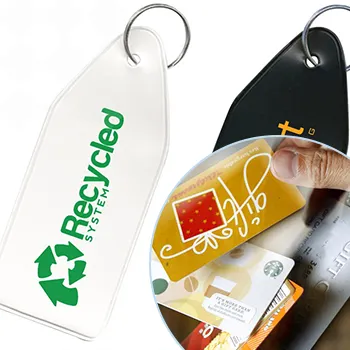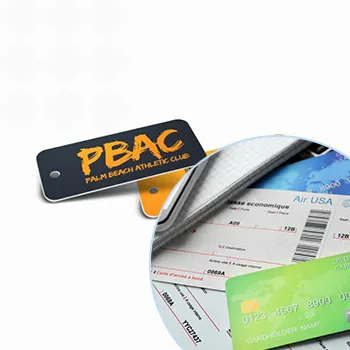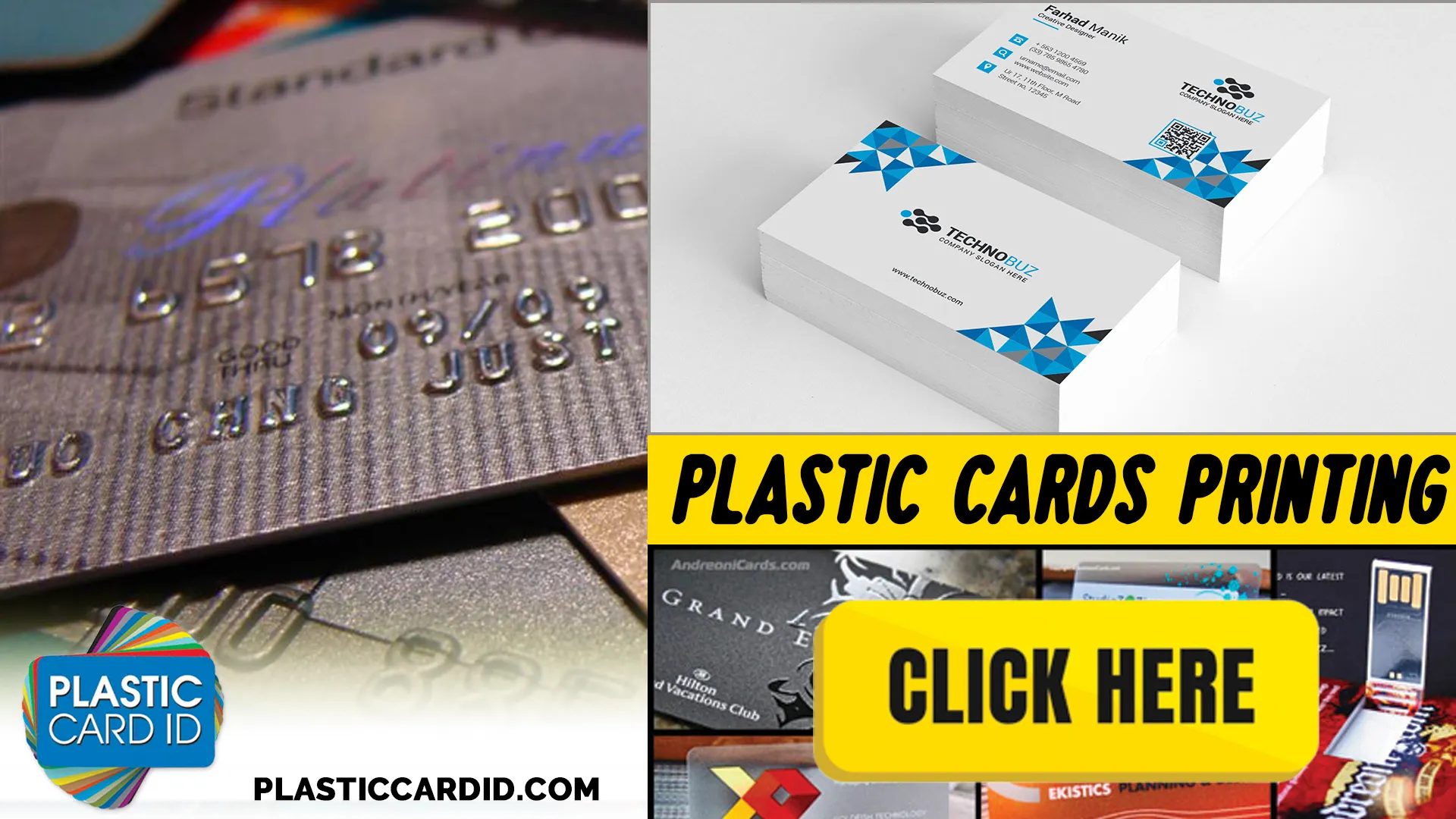Best Practices: Guidelines Storage Plastic Cards Security and Maintenance
Table of Contents []
- Guidelines Storage Plastic Cards
- Welcome to the Expertise in Plastic Cards Care and Storage
- Best Practices for Organizing Your Card Inventory
- Securing Plastic Cards for Transit and Transition
- Advanced Care for Technology-Embedded Plastic Cards
- Effective Cleaning Techniques for Plastic Cards
- Maintaining Card Printers for Optimum Output
- The Ultimate Guide to Efficient Card Handling and Lifespan
Guidelines Storage Plastic Cards
Welcome to the Expertise in Plastic Cards Care and Storage

At Plastic Card ID , we go beyond merely supplying quality plastic cards and printers. We provide comprehensive guidelines designed to protect your plastic cards from damage and wear, ensuring they maintain their quality and functionality over time. Adhering to these best practices means your cards will always reflect your brand's commitment to excellence, every time they're used.
Understanding the ins and outs of proper storage can vastly extend the life of your cards and save your business money in the long run. Incorrect storage can lead to degeneration of the material, rendering the cards useless and reflecting poorly on your brand. Let's dive into the effective strategies and tips that will keep your cards in top-notch condition.
Whether you're a seasoned professional or just starting out, these guidelines will be an indispensable part of your operation. And if you have any follow-up questions or need to place a new order, our team is just a call away at 800.835.7919 .
Understanding the Material of Your Plastic Cards
The first step in proper card storage is understanding the material the cards are made of. Plastic cards are generally made from PVC (polyvinyl chloride), which can be sensitive to certain environmental conditions. Knowing this helps us create an environment that will not degrade the material.
PVC is a durable plastic, but like all materials, it has its weaknesses. Exposure to high temperatures, direct sunlight, and moisture can warp or discolor your plastic cards, impacting both their appearance and functionality.
Optimal Temperature and Humidity Conditions
Maintaining an ideal temperature and humidity level is key in prolonging the life of your plastic cards. Temperature fluctuations and excessive humidity can lead to bending and cracking. A stable environment is your card's best friend.
As a rule of thumb, storing cards in a location that consistently stays between 60-75 degrees Fahrenheit (15-24 degrees Celsius), with a humidity level of about 50%, is the sweet spot for plastic card longevity.
Avoid Direct Sunlight and Heat
Direct sunlight and heat are the nemeses of plastic card storage. UV radiation can fade artwork and text, while heat can cause the plastic to become malleable and lose its shape. Always store your cards away from windows and heat sources.
Storing your cards in a cool, dark place like a drawer or cabinet can work wonders. Not only does this protect them from the sun's rays, but it also helps maintain the temperature and humidity levels at the ideal point.
Proper Air Circulation
A responsible card storage system ensures adequate air circulation. While it may seem counterintuitive, it is possible for cards to become "stale" if stored in airtight containers for prolonged periods. Some airflow prevents moisture build-up too, which could otherwise lead to card damage.
Choose storage solutions that are not completely sealed off from the outside air. Small holes or a container that is not air-tight can work well. Just be sure that the storage area itself remains environmentally stable.
Cleaning Your Plastic Cards
Over time, your plastic cards will inevitably come into contact with dirt and oils from handling. Cleaning cards regularly can keep them functioning and looking clean. A soft, non-abrasive cloth dampened with water and a little bit of soap will do the job without damaging the surface.
Remember to allow your cards to completely dry before returning them to storage. Just make sure not to use harsh chemicals or abrasive materials that could scratch or degrade the card's surface.
Best Practices for Organizing Your Card Inventory

An organized card inventory not only serves as a foundation for efficient operations but also plays a crucial role in the longevity of your plastic cards. Understanding how to sort and store your cards effectively can prevent unnecessary damage and confusion.
Organization is a simple yet critical component in care. By keeping your cards well-organized, you can ensure quick access and minimize handling, which in turn reduces the opportunity for physical wear and tear.
PCID believes in the power of a systematized approach. For any queries about creating an organizational system for your cards or supplies, feel free to give us a call at 800.835.7919 . Let's now explore the avenues to optimal organization.
Sorting by Type and Usage
Keeping cards sorted by type and frequency of use is key. This not only protects them from unnecessary handling but also streamlines the process of finding and deploying the right card when you need it.
Categorize your cards in a way that makes sense for your business. This could mean separating gift cards from loyalty cards or sorting access control cards by security clearance levels. The better the sort, the easier the use.
Using the Right Storage Equipment
The equipment you choose for storing your plastic cards can significantly affect their longevity. There are many storage options available, but selecting the one that fits the specific needs of your cards is paramount.
Cardholders, drawers, and filing cabinets designed for cards can provide the ideal environment. Look for materials that won't react with PVC and designs that accommodate the size and number of your cards without overcrowding.
Inventory Tracking and Control
Keeping accurate inventory records is not just good business practice-it's also an effective way to manage the physical condition of your cards. By tracking when cards come in and go out, you'll reduce the likelihood of overhandling and potential damage.
Implement a system that lets you track every card's usage. Whether it's a digital database or a manual log, the key is consistent and careful monitoring.
Regular Inventory Audits
Conducting regular audits of your card inventory is essential. It provides you with the opportunity to inspect the condition of your cards and ensure that your storage practices are being followed correctly.
Scheduled checks, perhaps monthly or quarterly, will keep your storage practices sharp and inform you quickly if there's any part of the process that needs tweaking or improvement.
Handling with Care
Even the act of handling cards can lead to unnecessary wear and tear. It's vital to instill best handling practices across your team to maintain card integrity. Gentle handling and minimal contact with the card's magnetic stripe or chip is a must.
Ensure that all staff members who handle cards are adequately trained in careful and correct handling methods. Wearing gloves can be an excellent way to keep oils from the skin from transferring to the cards.
Securing Plastic Cards for Transit and Transition

Transition periods-such as shipping or moving stock within your operations-pose a risk to the security and condition of your plastic cards. PCID emphasizes the importance of correctly securing cards during these vulnerable times.
Whether you are shipping cards to another location or simply transferring them between areas in your business, the right preparation can make all the difference. Robust transit practices prevent damage, loss, and the need for costly replacements.
PCID can easily be reached for new orders or any questions at 800.835.7919 . We are your allies in the proper handling and storage of plastic cards for their ultimate protection.
Choosing the Right Packaging Materials
Opting for the appropriate packaging materials is the first step in transit protection. Soft, cushioned envelopes, and sturdy boxes can absorb shock and prevent bending or snapping of cards.
Ensure that the packaging material is free of any chemicals that might adversely react with PVC and that it provides a snug fit to prevent cards from moving around excessively during transit.
Seal Against Moisture and Dirt
Moisture and dirt are your cards" adversaries, especially during transit. Using sealable plastic bags or containers can keep these elements at bay and ensure that your cards arrive in pristine condition.
Consider the use of desiccants like silica gel packs when shipping in bulk to absorb moisture from the air within the package. Just be sure to handle these materials properly to maximize their efficiency.
Labeling for Efficiency and Safety
Proper labeling on packaging can inform handlers of the fragile nature of the cards" contents. Labels such as "Handle with Care" or "Do Not Bend" can go a long way in protecting your cards during transit.
Clear labeling will also assist in the efficient processing and sorting of your cards once they reach their destination. Proper tags and markers ensure that they can be moved directly to their appropriate storage without unnecessary delays and handling.
Tracking for Accountability
Utilizing tracking options for shipped cards adds a layer of security and accountability during transit. This way, you can follow your cards" journey and be alerted to any potential issues immediately.
These tracking measures act as a deterrent to mishandling since carriers are aware that their handling of the package is being monitored. It also provides you with peace of mind and the ability to manage expectations around delivery times.
Insurance for Protection
Insurance might seem like an extra step, but it offers protection against financial loss due to damage or loss during transit. It safeguards your investment in your plastic cards and provides a safety net for your business.
When it comes to transporting a large volume of cards, especially cards of substantial value, securing insurance can be a wise decision. Be sure to choose the right level of cover for your specific needs.
Advanced Care for Technology-Embedded Plastic Cards

Technology-enhanced plastic cards, such as smart cards and proximity cards, require additional care in storage beyond the basics given their sensitive components. These types of cards are increasingly common and feature embedded chips and magnetic stripes that are susceptible to various forms of damage.
A thorough understanding of how to care for these cards will prevent technical failures and prolong their usable life, thus representing your brand's dedication to quality reliably. PCID is here to offer guidance and support through our array of products and services.
Keep your technology-embedded cards functioning at their peak with the following advanced care tips. For any questions or additional support, do give us a call at 800.835.7919 .
Avoid Magnetic Interference
One of the cardinal rules for storing cards with magnetic stripes is to keep them away from strong magnetic fields. Such fields can erase or corrupt the data stored on the stripes, rendering the cards unusable.
Store these cards apart from electronic devices that could generate magnetic interference, such as cell phones, computers, or magnets used in office organization tools.
Prevent Static and Electrical Shocks
Static electricity and electrical shocks can be detrimental to the embedded chips in smart cards. Proper storage requires conditions that minimize the risk of static build-up.
Utilizing anti-static materials and containers can help prevent the buildup of static electricity. Such precautions are especially necessary in dry environments where static is more prevalent.
Individual Sleeves for Chip Protection
Protective sleeves can provide an extra layer of defense for the delicate chips in smart cards. By housing each card in its sleeve, you add a barrier against scratches, dust, and other physical stressors.
These sleeves are often made of soft materials that do not scratch the card's surface, yet offer firm protection. Using them is a cost-effective way of preserving the functionality and appearance of your technology-enhanced cards.
Strategic Storage Placement
The physical location within your storage area is also critical for technology-enhanced cards. Ideally, these cards should be stored higher up where potential flooding or spillage is less likely to reach them.
In addition, prioritize them for easier access since they are more frequently used, and ensure they are adequately labeled to avoid unnecessary handling and movement.
Regular Testing and Maintenance
Regular testing of your technology-enhanced plastic cards is a proactive step in ensuring their longevity. This routine check-up can catch issues early and prevent larger malfunctions down the line.
Pair this with responsible maintenance, such as cleaning the chip and magnetic stripe gently and securely placing the card back into its sleeve, to keep these advanced cards in tip-top shape.
Effective Cleaning Techniques for Plastic Cards

Cleanliness is an aspect of storage and card care that often goes unnoticed, yet plays an integral role in a card's life cycle. With everyday use, plastic cards can accumulate dirt and oils, which can ultimately interfere with their functionality.
The correct cleaning procedures will save you time and money by reducing the need for replacements and keeping your cards operational and looking professional for longer. Explore the steps needed for effective cleaning of your plastic cards with PCID .
For any extra help or to order cleaning kits for your plastic cards and printers, our team is ready to assist at 800.835.7919 .emplify the care and attention we give to every detail, reflecting our deep understanding of our customers" needs.
Use Gentle Cleaning Agents
While it's necessary to keep your plastic cards clean, using harsh chemicals can damage the cards instead of protecting them. Gentle, non-abrasive cleaners are best suited for this purpose.
A mild soap and water mixture will typically suffice for removing most surface dirt. Avoid alcohol-based cleaners or those with acetone, as they can cause the plastic to degrade over time.
Soft Cloths and Brushes
A soft, lint-free cloth is the perfect tool for cleaning plastic cards without scratching their surface. For more stubborn dirt, soft-bristled brushes can gently scrub the cards without causing harm.
Always use light, circular motions when wiping or brushing cards. This reduces the risk of creating grooves or scratches which could be detrimental to the cards" magnetic strips or chips.
Proper Drying Is Essential
After cleaning, it's important to ensure that cards are thoroughly dried before returning them to storage. Any residual moisture can lead to warping or swelling of the plastic with time.
Pat cards dry with a clean, dry cloth, or allow them to air dry completely before storing them away. Do not use heated methods to dry cards, as excessive heat can warp the cards.
Card Printer Cleaning
If you use a card printer, regular cleaning of the printer itself is crucial for maintaining card quality. Dust and debris can accumulate inside the printer, leading to poor print quality or damage to the cards.
Use the manufacturer-recommended cleaning kit for your specific model. Keeping the printer clean is just as important as keeping the cards clean for optimal performance and longevity.
Regular Cleaning Schedule
Implement a regular cleaning schedule for both your plastic cards and card printers. This proactive approach helps to avoid the accumulation of dirt and extends the life of the cards and equipment.
Whether it's weekly, bi-weekly, or monthly, create a cleaning schedule that fits into your regular maintenance routine. A consistent cleaning regimen is the key to keeping your cards and printers in excellent working condition.
Maintaining Card Printers for Optimum Output

Card printers play a significant role in the production and maintenance of plastic cards. These specialized printers need their own set of care and storage guidelines to ensure they consistently produce high-quality outputs.
We understand that printer maintenance might seem daunting, but with the right know-how and support, it can become a seamless part of your operation. PCID is here to ensure your card printers function at their best. Our comprehensive resources and responsive support team are only a call away at 800.835.7919 .
Let's explore the steps you can take to maintain your card printers effectively, thus ensuring the cards they produce maintain the highest standards.
Proper Printer Storage
Like plastic cards, printers also require the right environmental conditions. Store your printer in a dust-free, temperate, and low-humidity environment to prevent internal damage and keep it running smoothly.
Making sure the printer is covered when not in use can also protect it from any airborne contaminants. A breathable cover is ideal to prevent moisture build-up within the unit.
Regular Printer Cleaning
Regular cleaning is just as crucial for printers as it is for cards. Most card printers have a prescribed cleaning routine detailed in their user manual, and following this closely can help avoid technical issues.
Using the recommended cleaning kits and adhering to the recommended cleaning cycle after a certain number of prints will help maintain print quality and printer longevity.
Using High-Quality Consumables
The consumables you use with your card printer, like ribbons and cleaning rollers, make a significant impact on the print quality and the condition of the printer itself.
Invest in high-quality, compatible consumables that work well with your printer model. This can prevent damage to the printer's internal components and ensure vibrant, consistent print-outs.
Updating Printer Firmware and Drivers
Keeping your printer's firmware and drivers updated is essential for optimal operation. Updates often fix known issues, enhance functionality, and ensure compatibility with operating systems and software.
Check the manufacturer's website regularly or sign up for update notifications to keep your printer software current. This small step can prevent more significant issues down the road.
Leading with Best Practices
Good storage and maintenance habits start with leading by example. Train your staff in the best practices for printer care and usage to ensure consistent handling across the board.
Creating a culture of care within your organization will reflect in the quality of your plastic cards and the longevity of your equipment, maintaining your brand's reputation for excellence.
Get an Instant Quote
Visit PlasticCardID to get started!
The Ultimate Guide to Efficient Card Handling and Lifespan

Handling plastic cards may seem straightforward, but optimizing the approach to card handling can drastically affect their lifespan and performance. Efficient handling ensures that each card remains an ambassador for your brand's quality and commitment to excellence.
With PCID's targeted advice and relentless dedication to client success, we can guide you through the intricacies of card handling for supreme durability and continued functionality. If assistance is needed, or to place your next order, reach out to us at 800.835.7919 .
Let these insights become the benchmark of operation within your business, as we highlight the most efficient ways to handle your plastic cards.


